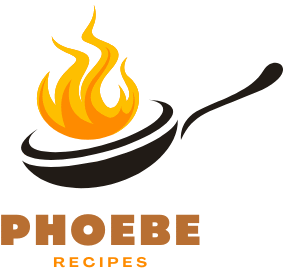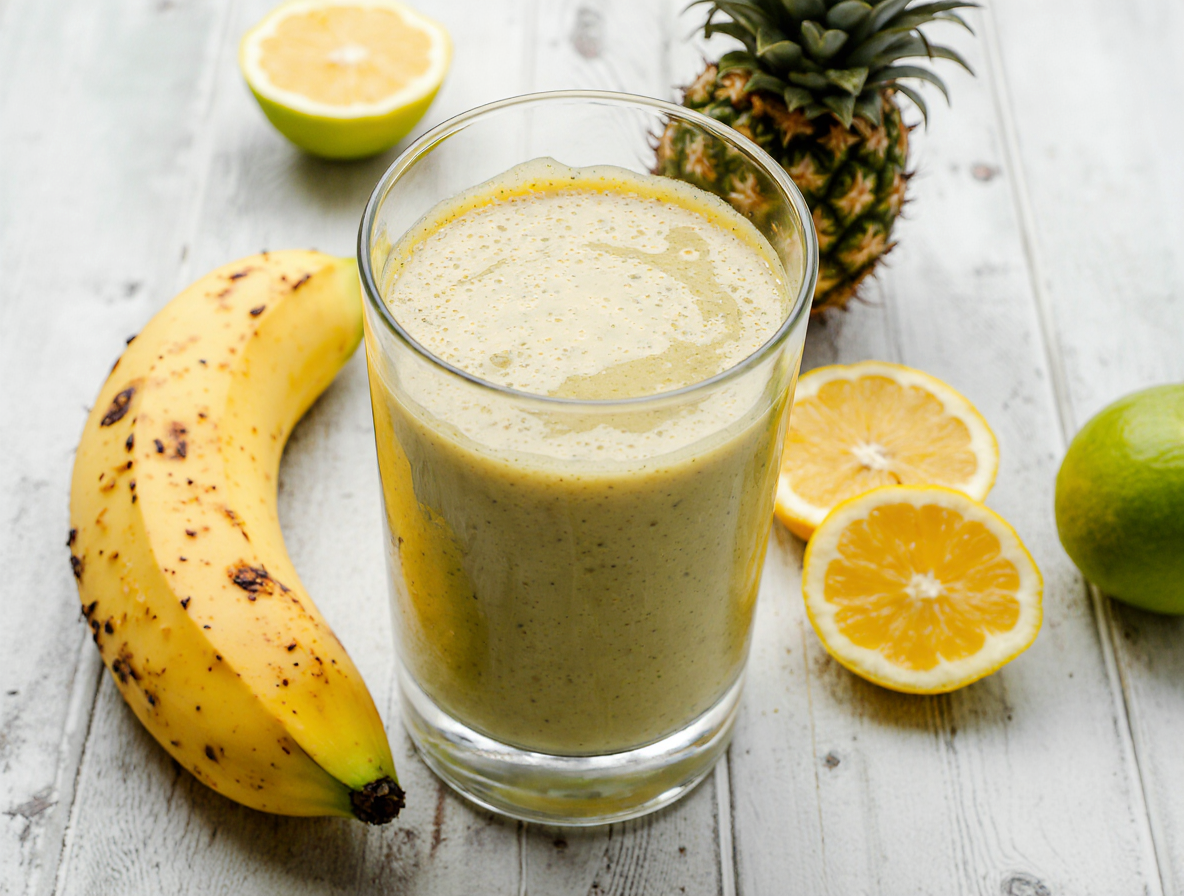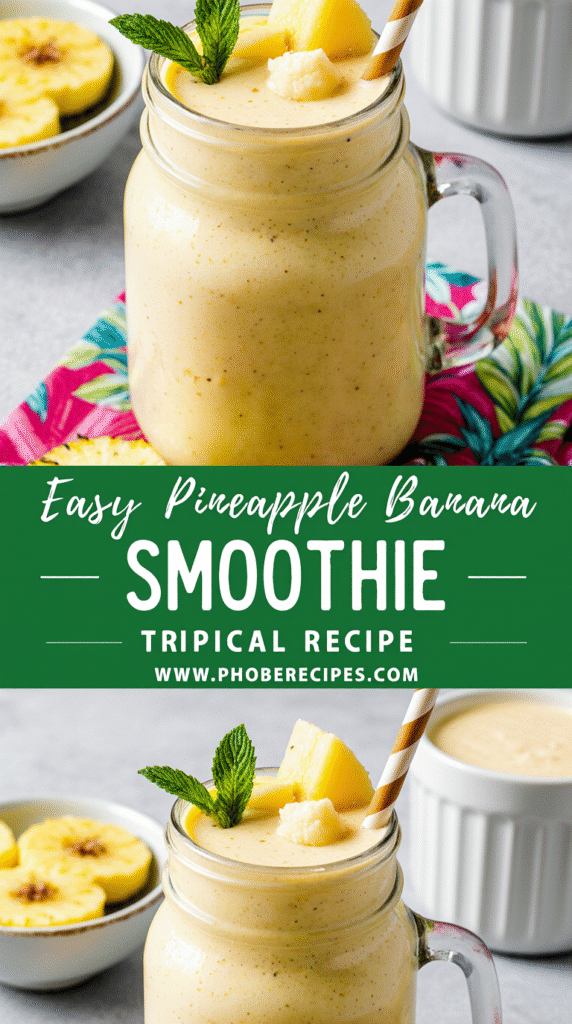Perfect Pineapple and Banana Smoothie: A Foolproof Tropical Recipe (2025)
A refreshing pineapple and banana smoothie takes just 5 minutes to create yet delivers a powerful punch of tropical flavor and nutrition. I’ve found this simple blend to be the most refreshing drink during summer months, combining delicious tropical tastes in one creamy glass.
This tropical smoothie recipe is certainly worth adding to your regular rotation, especially considering each serving contains an impressive 104% of your daily vitamin C needs. What makes this pineapple banana smoothie recipe particularly appealing is how easily it comes together with just a handful of ingredients. Additionally, the fresh mint can add an exceptional flavor that sets your smoothie apart from ordinary fruit blends.
Throughout this guide, we’ll explore the essential ingredients, step-by-step instructions, creative variations, and pineapple and banana smoothie benefits that make this drink so popular. Whether you prefer your smoothie thick and creamy or light and refreshing, I’ll show you how to customize it perfectly to your taste preferences.
Essential Ingredients for the Perfect Pineapple Banana Smoothie
Creating the perfect pineapple banana smoothie begins with selecting quality ingredients. The right combination of fruits, liquids, and add-ins transforms a simple blend into a nutritional powerhouse that tastes like a tropical vacation in a glass.
Fresh vs. frozen pineapple: what to choose
When selecting pineapple for your smoothie, both fresh and frozen options offer unique advantages. Frozen pineapple is often preserved at peak ripeness, locking in essential vitamins and minerals. This preservation method allows frozen pineapple to retain higher levels of certain nutrients compared to fresh-stored options. Furthermore, frozen pineapple provides convenience without requiring peeling or coring, while still delivering vitamin C and manganese that support immunity and bone health.
Fresh pineapple, meanwhile, offers vibrant flavors and natural sweetness. However, if using fresh, ensure it’s fully ripe for optimal taste. Notably, both options contain bromelain, an enzyme that may aid digestion and reduce inflammation.
Why ripe bananas matter
The ripeness of your bananas significantly impacts your smoothie’s flavor and texture. Ripe, brown-spotted bananas provide the perfect amount of sweetness without needing additional sweeteners. For the creamiest texture, frozen banana slices work wonders.
Overripe bananas that are just about to brown are ideal candidates for freezing. Simply peel, slice into chunks, and freeze them for future smoothies. This approach not only prevents food waste but also ensures you always have smoothie-ready bananas on hand.
Choosing the right liquid base: milk, juice, or water
Your liquid base fundamentally affects your smoothie’s consistency and nutritional profile. Milk (dairy or plant-based) creates creamier smoothies and adds protein. Almond milk offers vitamin E and magnesium while keeping calories low. Coconut milk provides MCTs for sustained energy, whereas dairy milk delivers calcium and vitamin D.
For a lighter option, water keeps calories minimal while allowing fruit flavors to shine. Alternatively, pineapple juice intensifies the tropical flavor but adds natural sugars. Coconut water presents a middle ground—low in calories (about 8g sugar per cup) while providing electrolytes like potassium and magnesium.
Optional add-ins: yogurt, seeds, and sweeteners
Greek yogurt adds creaminess and protein to your smoothie, making it more filling and nutritionally complete. For a dairy-free version, consider coconut or almond-based yogurts.
Seeds like chia, flax, or hemp boost fiber and healthy fats. Just one tablespoon of ground flax or chia seeds can significantly enhance nutritional value without affecting flavor.
Most properly made pineapple banana smoothies won’t require additional sweeteners if using ripe fruits. However, if needed, options include:
- Honey or maple syrup for natural sweetness
- Dates for fiber along with sweetness
- Stevia drops for zero-calorie sweetening
A tablespoon of nut butter (almond, cashew, or peanut) can add richness and staying power to your tropical creation, complementing the fruity flavors while adding healthy fats and protein.
Step-by-Step Guide to Making the Smoothie
Making a perfect pineapple and banana smoothie is straightforward once you understand the proper technique. Following these steps ensures your tropical creation comes out silky smooth every time.
Step 1: Prepare your ingredients
First, peel and cut your pineapple, carefully removing the hard center core that can affect taste and texture. Dice the sweet yellow flesh into cubes approximately 1-inch in size for easier blending. For bananas, slice them into chunks before freezing – this prep work pays dividends in smoothie quality. Measure all add-ins like yogurt or seeds beforehand, placing everything within arm’s reach of your blender to streamline the process.
Step 2: Blend to the right consistency
The order of ingredients matters significantly when creating the perfect texture. Begin by adding your liquid base (milk or juice) to the blender first, as this creates a vortex that pulls other ingredients toward the blades. Next, add soft ingredients like yogurt, followed by pineapple chunks and frozen banana pieces on top. Start blending on low speed for 10-15 seconds, then gradually increase to high speed. Most importantly, don’t over-blend—20-30 seconds is typically sufficient for a perfectly smooth consistency.
Step 3: Taste and adjust sweetness or thickness
Once blended, sample your creation before serving. Too thick? Add small amounts of liquid (¼ cup at a time) until reaching desired consistency. Conversely, if it’s too thin, incorporate more frozen fruit or a half banana. For sweetness adjustments, natural options like a drizzle of honey work perfectly. Remember that properly ripened fruits usually provide sufficient natural sweetness without additives.
Step 4: Serve with style
Pour your freshly made smoothie into a chilled glass for optimal presentation. Subsequently, garnish with creative toppings to elevate both appearance and flavor. Fresh pineapple wedges, banana slices, unsweetened coconut flakes, or even crushed nuts make excellent decorative elements. For special occasions, consider serving in a hollowed pineapple half or coconut shell. Essentially, presentation transforms an ordinary smoothie into an impressive tropical treat worth savoring immediately.
Customizations and Variations to Try
The versatility of pineapple banana smoothies allows for endless customization to match your dietary needs, flavor preferences, or nutritional goals. These adaptations transform the basic recipe into something uniquely yours without sacrificing taste or simplicity.
Make it vegan or dairy-free
For a plant-based version, simply swap traditional dairy with alternatives. Replace regular yogurt with soy, coconut, or almond-based options . Any plant-based milk works beautifully—try almond, oat, soy, or cashew milk . For those avoiding nuts, oat milk provides a creamy texture without allergen concerns . Even without yogurt, your smoothie maintains its silky texture when using frozen fruit and adequate plant milk.
Add tropical fruits like mango or passionfruit
Enhance the tropical profile by incorporating complementary fruits. Mango pairs exceptionally well with the base recipe—try using 1½ cups pineapple plus ½ cup mango for balanced flavor . Passionfruit adds tangy notes that contrast beautifully with banana’s sweetness . Alternatively, experiment with strawberries, peaches, papaya, or melon for unique flavor combinations .
Use coconut milk for a piña colada twist
Transform your morning smoothie into a virgin piña colada by substituting coconut milk as your liquid base. Light coconut milk (from a carton) keeps calories reasonable while providing tropical flavor . For special occasions, canned coconut milk creates a decadently rich texture . Adults might appreciate adding 1-2 ounces of rum for an authentic cocktail experience .
Turn it into a smoothie bowl
Creating a spoonable version requires reducing liquid content for thicker consistency . The perfect bowl can be made with just frozen pineapple, banana, and minimal liquid . Top your creation with:
- Nuts (almonds, cashews, pecans)
- Seeds (chia, flax, hemp, pumpkin)
- Granola or coconut flakes
- Fresh fruit slices
Add protein powder or oats for a meal replacement
Make your smoothie more substantial by adding 1 scoop of protein powder (whey, pea, or other varieties) . For additional staying power, incorporate ⅓ cup rolled oats . Chia or flaxseeds boost fiber and healthy fats while adding minimal calories . These additions transform a simple refreshment into a nutritionally complete meal containing approximately 260 calories, 37g carbohydrates, and 17g protein .
Health Benefits of Pineapple and Banana Smoothies
Pineapple and banana smoothies offer a wealth of nutritional advantages beyond their delicious tropical flavor. This sweet beverage delivers numerous health benefits through its powerful combination of fruits.
Rich in vitamin C and antioxidants
A single serving of pineapple banana smoothie provides more than 100% of your daily vitamin C needs. Pineapple specifically contains high levels of vitamin C that supports immune function, collagen production, and iron absorption. Moreover, both fruits contain powerful antioxidants that help reduce inflammation and prevent cell damage. Pineapple contains bromelain, which functions as an anti-inflammatory enzyme, alongside other antioxidants like dopamine and catechin found in bananas that may reduce the risk of heart disease.
Good source of dietary fiber
Altogether, a pineapple banana smoothie contains approximately 4.6g of fiber per serving, representing about 16% of your daily requirements. This dietary fiber promotes digestive regularity and feeds beneficial gut bacteria. Although blending slightly breaks down the fiber structure, it still retains much of its digestive benefits. This fiber content consequently helps slow sugar absorption, keeping energy levels steady throughout the day.
Hydrating and energizing
Both pineapple and banana have high water content, making this smoothie exceptionally hydrating. The fruits contain electrolytes such as potassium (811.3mg per serving, or 17% of daily value), which help maintain proper fluid balance. Indeed, the natural sugars from these fruits provide clean energy without the crash associated with processed sugars.
Supports digestion and immunity
Bromelain, found exclusively in pineapple, aids digestion by breaking down proteins more efficiently. This enzyme specifically assists with pancreatic insufficiency. Along with manganese and zinc from pineapple, plus vitamin B6 from bananas, this smoothie strengthens your immune system.
Low-fat and naturally sweet
With just 0.9g of fat per serving, this smoothie is naturally low in fat while delivering natural sweetness. A typical serving contains about 262 calories, making it a nutrient-dense option compared to many sweetened beverages.
Conclusion
This refreshing pineapple banana smoothie stands out as both a nutritional powerhouse and a delicious tropical treat. Throughout this guide, we’ve explored how simple ingredients combine to create something truly special. Frozen or fresh pineapple paired with ripe bananas creates the perfect base, while your choice of liquid—whether milk, juice, or water—allows for endless customization.
The beauty of this smoothie lies not only in its vibrant flavor but also in its impressive health profile. With over 100% of your daily vitamin C requirements per serving, significant fiber content, and natural hydration properties, your body will thank you for this delicious addition to your routine.
What makes this recipe particularly valuable is its versatility. You can easily transform it into a vegan delight, a protein-packed meal replacement, or even a tropical smoothie bowl with creative toppings. The piña colada variation certainly ranks as my personal favorite for weekend brunches!
Remember that quality ingredients make all the difference. Ripe bananas provide natural sweetness, eliminating the need for additional sweeteners. Additionally, proper blending technique ensures the perfect consistency every time.
Whether you seek a quick breakfast, post-workout refuel, or refreshing summer treat, this pineapple banana smoothie delivers on all fronts. After experimenting with countless smoothie recipes over the years, I can confidently say this tropical blend deserves a permanent place in your regular rotation. The combination of simplicity, nutrition, and incredible taste makes it a foolproof choice for smoothie enthusiasts and beginners alike.
FAQs
Q1. How can I make my pineapple banana smoothie creamier? To achieve a creamier texture, use frozen banana slices and add Greek yogurt or coconut milk. You can also include a tablespoon of nut butter for extra richness.
Q2. Is it better to use fresh or frozen pineapple for smoothies? Both fresh and frozen pineapple work well. Frozen pineapple is convenient and often preserved at peak ripeness, while fresh pineapple offers vibrant flavors. Choose based on availability and personal preference.
Q3. Can I make this smoothie into a meal replacement? Yes, you can transform it into a meal replacement by adding protein powder or rolled oats. This will increase the protein and fiber content, making it more filling and nutritionally complete.
Q4. What are the health benefits of a pineapple banana smoothie? Pineapple banana smoothies are rich in vitamin C, antioxidants, and dietary fiber. They support digestion, boost immunity, provide hydration, and offer natural energy without added sugars.
Q5. How can I customize my pineapple banana smoothie? You can customize your smoothie by adding other tropical fruits like mango or passionfruit, using different plant-based milks, incorporating seeds for extra nutrition, or turning it into a smoothie bowl with various toppings.


